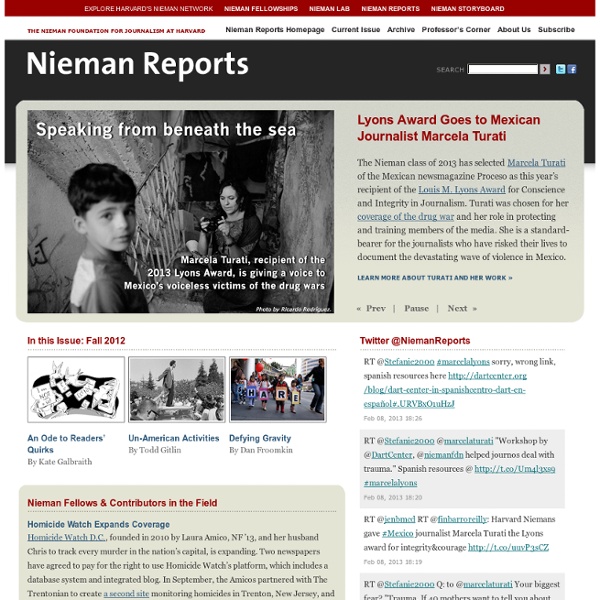



Nieman Watchdog > Commentary > Big Brother now has a name: Lockheed Martin COMMENTARY | January 13, 2011 The nation's largest defense contractor doesn't just make cluster bombs, overpriced fighter jets and ballistic missiles. Author William Hartung writes that it's also collecting information on you. This article originally appeared on TomDispatch.com. By William D. Have you noticed that Lockheed Martin, the giant weapons corporation, is shadowing you? True, Lockheed Martin doesn’t actually run the U.S. government, but sometimes it seems as if it might as well. Oh, and Lockheed Martin has even helped train those friendly Transportation Security Administration agents who pat you down at the airport. A For-Profit Government-in-the-Making If you want to feel a tad more intimidated, consider Lockheed Martin’s sheer size for a moment. Add to all that its 140,000 employees and its claim to have facilities in 46 states, and the scale of its clout starts to become clearer. How in the world did Lockheed Martin become more than just a military contractor? William D.
Media’s evolving spheres of discovery Here’s another in an occasional series of posts to that try to examine, explain, and illustrate the new structure of media. This one looks at how we discover content now. Back in the day, a decade (to 50 decades) ago, we discovered media — news, information, or service — through brands: We went and bought the newspaper or magazine or turned on a channel on its schedule. That behavior and expectation was brought to the internet: Brands built sites and expected us to come to them. Now there are other spheres of discovery — new spheres that are shifting in importance, effectiveness, and share. Start with brands. Next came search. Algorithms — Google News or Daylife (where I’m a partner) — also meet the organizational challenge of abundant content and they tackle the challenge of timeliness. Now we need to better understand the quality of those links and linkers. Note in that example that media doesn’t come just from media anymore. What does this mean for the economics of media? Like this:
82% internautes quitteraient leur site devenu payant Only 35% of online news consumers have a favourite site, with most consumers using multiple sites, a Pew study has found. While 71% of internet users get their news online – a number that has held relatively steady in recent years according to the report – the majority (65%) aren't loyal to a single site. According to data from an Outsell study, most people even don't read articles as 44% of visitors to Google News are just scanning headlines and never click on articles themselves. As news organisations discuss charging for content using full subscriptions and pay-per-article fees, these figures heavily suggest that it remains as unclear as ever how to monetise the growing audience. The findings of the survey reassert what Walter Lippmann wrote about the reader in his book Public Opinion: "He will pay a nominal price when it suits him, will stop paying whenever it suits him, will turn to another paper when that suits him. What Lippmann wrote in 1922 is obviously still valid today.
11% dinfos originales We often talk about the new news ecosystem — the network of traditional outlets, new startups, nonprofits, and individuals who are creating and filtering the news. But how is the work of reporting divvied up among the members of that ecosystem? To try to build a datapoint on that question, I chose a single big story and read every single version listed on Google News to see who was doing the work. Out of the 121 distinct versions of last week’s story about tracing Google’s recent attackers to two schools in China, 13 (11 percent) included at least some original reporting. And just seven organizations (six percent) really got the full story independently. But as usual, things are a little more subtle than that. The New York Times broke the story last Thursday, writing that unnamed sources involved in the investigation of last year’s hacking of a number of American companies had traced the attacks to a prestigious technical university and a vocational college in mainland China.
New Business Models for news The ongoing goal of the New Business Models for News project is to inform the discussion about the future of news with business specifics — experience, facts and figures. After months of research and analysis, we have created business models that we believe demonstrate there is a sustainable future for local news. For the purpose of our models we utilized data from a top-25 metro market and hypothesized that the sole daily newspaper had ceased publication. We began with the assumption that there will continue to be a market demand for quality journalism and that the market will find a way to meet that demand. So, what will fill the void? We posit that no single company or product will replace the metro daily newspaper. Although these genericized models are backed up by extensive, well-documented research, they are but one possible view of the future. Hyperlocal and Ecosystem Framework Models Hyperlocal sites are the building blocks of the new news ecosystem.
Réflexion sur l’avenir des journalistes et des médias | Samsa ne Sesssion de rattrapage en 20 minutes en anglais pour ceux qui veulent se poser les bonnes questions sur l’évolution du journalisme et des médias. C’est une conférence que vient de donner le directeur du Pew Research Center’s Project for Excellence in Journalism, Tom Rosenstiel. Pour résumer les points saillants: